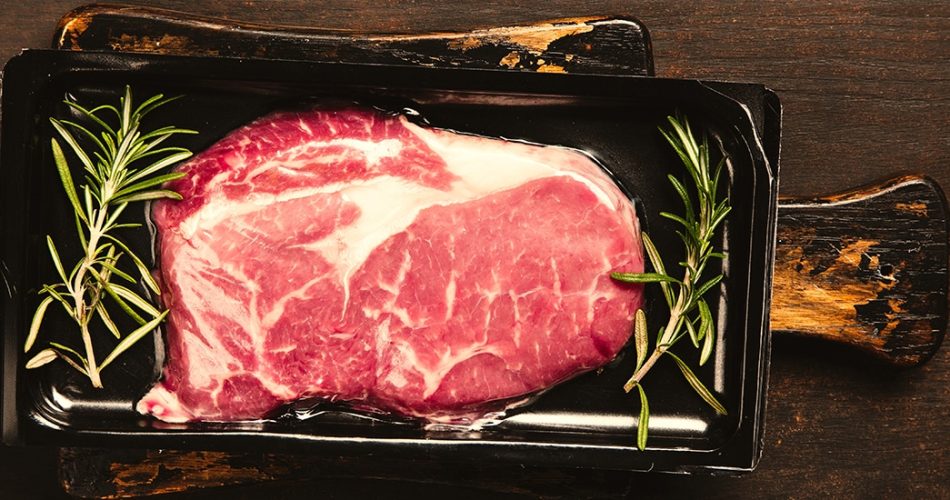
Vacuum Skin Film
Vacuum skin packaging has emerged in recent years as the gold standard option in barrier food packaging. Effortlessly combining retail appeal with product protection, it’s an ideal option for food processors of all sizes.
What is Skin Film?
Skin film is a multi-layered barrier plastic used primarily in the food industry, which has superb clarity and robust oxygen and moisture defense.
Skin Film can also shrink to size.
This means that the plastic will seal itself directly against the product like a second skin.
First the product is placed on a rigid base, such as a tray, or laminated cardboard board. The plastic layer is then applied on top. All air is sucked out from the package, creating a vacuum and allowing the film to sit directly against the product, then the layers are sealed closed.
What Are the Main Benefits of Skin Film?
Simultaneously practical and aesthetic, the main benefit of vacuum skin packaging is the tight skin greatly prolongs shelf life and keeps the product well protected. It prevents product movement and avoids any leaks or purge – which can also reduce shelf life if allowed.
The barrier protection of the plastic prevents any oxygen from reaching the product, meaning bacteria growth, freezer burn, and oxidisation are prevented. This allows the meat to remain a vibrant red colour, optimising presentation, while minimising the need for preservatives – an additional boon in today’s health-conscious society.
Who is Vacuum Skin Packaging For?
Vacuum skin film is most often used for fresh seafood, fresh meat, and poultry.
It is most effectively used when selling to a retail market, either in person or via an online site, as it exponentially increases the aesthetic appeal of the product with its simple design. The ‘second skin’ look also allows a far better view of the product itself.
The serious protection packaging such as this offers, also makes it suitable for e-commerce, as it is less likely to get damaged or lose quality in transit. Its ability to prevent any leaks or purge means the product can be used in vertical merchandising, also increasing its retail potential and versatility.
It’s the perfect packaging for food processors who are used to selling their product wholesale and wish to transition into the retail space. Offering a straightforward way to transform your product into something much more appealing to the retail buyer.
It’s a well-known advantage that customers buy with their eyes, and by using something like skin packaging, you can leverage this.
How Can You customise Skin Packaging?
If you eventually need to customise for product, this can be done by printing on the rigid bottom layer, or by adding a printed cardboard sleeve to fit over the tray.
What is the difference between this and MAP Packaging?
Vacuum Skin Packaging is similar to MAP packaging, in that both use a tray as the bottom layer, and lidding film on top.
However, MAP film does not shrink, instead the air inside the package is replaced with a modified atmosphere gas designed to reduce possibility of bacteria forming.
With Vacuum Skin Packaging, however, the film seals so tightly against the product that nearly all oxygen is removed, and gas is unnecessary.
How to Do You Get Started?
Skin film is easy it is to implement, with relatively low entry costs and little equipment required.
The film must be used with a rigid base, which can be something like a plastic tray, or a flat board. Using vacuum skin packaging means there is no need to use extra packaging products such as soaker pads or bone guard with it. This film solution minimises waste of both food and packaging.
The skin film can be sealed using a thermoformer but works just as well with only a tray sealer. If you have no need for a tray sealer over the long-term, Viking Food Solutions offers these for rental.
Equipping the food industry to grow with food processing and packaging solutions
call 1300 88 99 51
email [email protected]
room 35 Shirley Way, Epping VIC 3076
room 9 Mcilwraith St, Wetherill Park NSW 2164
room 21 Hoyle Rd, Hope Valley WA 6165
room 27 Beal Street, Meadowbrook QLD 4131
room 7 Chadderton Bvd, Epping VIC 3076
room 22 Glassford Rd, Kewdale WA 6105
room 25 Hayton Road, Wigram, Christchurch 8042, NZ
Connect with us on LinkedIn
